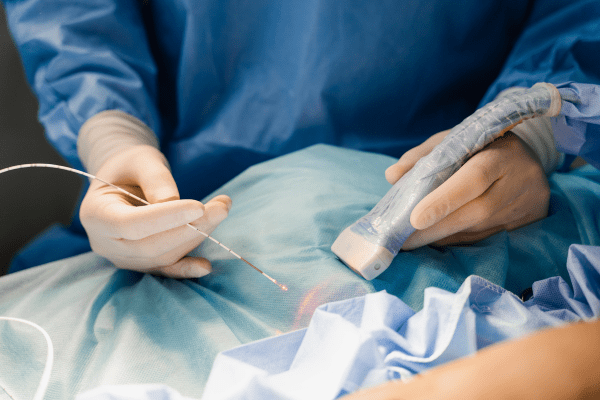How to Diagnose an Enlarged Prostate (BPH)

As the prostate is an internal gland, it is critical that only medical professionals perform the examination. Self-examination at home should not be used to avoid any injury or harm.
Diagnosis
Early detection of BPH is critical because untreated BPH can cause urinary tract infections, bladder or kidney damage, bladder stones, and incontinence. It is critical to distinguish BPH from more serious diseases such as prostate cancer.
The extent to which the prostate enlarges varies between individuals. Your doctor may assess your condition by asking you questions about the severity and type of symptoms & perform a physical examination to check their impact on your daily routine. This preliminary examination will most likely include the following but will vary from patient to patient.
- Digital rectal exam. To check for prostate enlargement, the doctor inserts a lubricant finger into the rectum.
- Urine test. A urine sample analysis can indicate about an infection or other conditions that cause similar symptoms.
- Prostate-specific antigen (PSA) blood test. PSA is a hormone produced in the prostate. When you have an enlarged prostate, your PSA levels will rise. Elevated PSA levels, can also be caused by recent procedures like infection, surgery, or prostate cancer.
Following that preliminary check-ups, if need arises, your doctor may suggest additional tests to confirm an enlarged prostate and rule out other conditions. Among these tests are:
Uroflowmetry. You are required to urinate into a container that is connected to a machine that measures the strength and volume of your urine flow. This test results can help in determining whether your condition is improving or worsening over time.
Post void residual volume test. This test determines whether you can completely empty your bladder. The ultrasound test or inserting a catheter into your bladder after you urinate can be used or performed to measure how much urine is left in your bladder.
24-hour voiding diary. Examining and recording the frequency and volume of urine you pass may be especially beneficial if you pass more than one-third of your daily urinary output at night..
If your condition is more complicated, your doctor may advise you for:
Trans rectal ultrasound. It is a 5 to 15 minutes outpatient procedure. To measure and evaluate your prostate, a lubricated ultrasound probe is inserted into your rectum.
Prostate biopsy. Trans rectal ultrasound directs needles used to collect sample of the prostate tissue (biopsies). Examining the prostate tissue may assist your doctor in diagnosing or ruling out prostate cancer.
Urodynamic and pressure flow studies. A catheter is inserted into your bladder through your urethra. Slowly, water — or, less commonly, air — is injected into your bladder. Your doctor will then be able to measure bladder pressure and assess how well your bladder muscles are working. These studies are usually reserved for men who have suspected neurological problems or on whom previous prostate procedures were performed and still have symptoms.
Cystoscopy. A flexible, lighted instrument is inserted into your urethra allowing the doctor to see inside the urethra and the bladder. Before this cystoscopy test, you will be given local anaesthesia.
Magnetic Resonance Imaging (MRI). MRI of the prostate provides images of the entire prostate with excellent soft tissue contrast.



